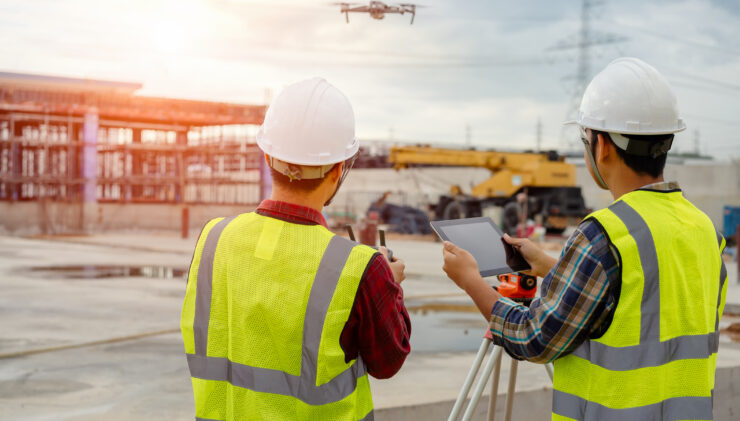 New Heat Standards Impact the Construction Industry
New Heat Standards Impact the Construction IndustryTechnological advancements are changing the way contractors work. From high-tech tools that improve safety to new threats that may delay projects, technology is both increasing and helping to control construction risk.
Technology Is Improving Construction Safety
Construction is a dangerous industry. In fact, the BLS says the construction industry accounted for nearly half of all fatal falls, slips, and trips in 2021. Plus, nearly one in five workplace deaths occurred in the construction industry that year. Any advancement that makes construction work safer is welcome. Below are just a few of the new technologies that look promising.
- Wearable technology monitors workers, prevents injuries, detects hazards, and provides alerts. For example, according to ConExpo Con/Agg, smart boots detect when a worker falls and automatically send an alert to colleagues.
- Exoskeletons (another popular type of wearable technology) help construction workers avoid injuries while boosting productivity. ConExpo Con/Agg says human construction workers wearing exoskeletons can lift heavy steel beams, lumber, and other items that would normally require heavy equipment without suffering from muscle strain.
- Site monitoring devices make it easier to remotely assess potential hazards. For example, by using drones, construction leaders may be able to avoid sending human workers into dangerous locations. Alternatively, drone footage can give workers a heads-up to show them what to expect and allow them to prepare.
Construction Projects Are Vulnerable to Cyberattacks
As construction sites leverage more technology to boost safety and productivity, they also become more vulnerable to cyberattacks. According to the 2023 Threat Intelligence Report from Ontinue, the construction and IT sectors accounted for nearly half of all ransomware attacks in 2023.
Unfortunately, many construction leaders may be unprepared for the impact of cyberattacks. In a study from the Dodge Construction Network, 77% of architecture, engineering, and construction firms said they would experience critical schedule delays if a ransomware attack blocked access to documentation for more than five days. According to Travelers, the average ransomware incident lasts 16.2 days.
Given the serious potential for project delays, it’s important to take the threat of ransomware seriously. Construction leaders can take steps to reduce the odds of a successful attack. Some basic steps include:
- Using antivirus and firewall programs and applying system patches as soon as they become available to reduce vulnerabilities that hackers may exploit.
- Maintaining secure backups that are not connected to your network and will not be compromised in the event of a ransomware attack.
- Configuring access controls using the principle of least privilege to limit who can access your system.
- Training workers on how to avoid phishing attacks, which may become more common and sophisticated due to new generative AI tools.
Leveraging Technology to Find and Train Skilled Workers
The construction industry is experiencing a skilled labor shortage. According to Associated Builders and Contractors, the sector will need to hire more than half a million more workers than usual to meet demand for labor in 2024.
Worker shortages have many negative impacts on construction – from project delays to heightened risks of injuries and defective construction. However, technology is helping.
Some of the same technology that improves worker safety can help with the labor shortage. For example, drones that assess sites in place of human workers reduce the number of workers needed, whereas exoskeletons increase the amount of work an individual worker can take on.
Technology can also help with training and hiring. According to Construction Dive, construction-specific job boards are making it easier for construction leaders to find workers with the skills and experience they need.
Once companies have hired workers, virtual reality (VR) and augmented reality (AR) tools can assist with training by giving them an immersive but safe experience to learn how to do their job safely and effectively. The National Safety Council (NSC) recommends VR and AR as one way to reduce risk in the construction sector. According to the NSC, 55% of workers lack workspace awareness training, but 22% say AR or VR for training would reduce their personal risk of a serious injury.
Is Your Insurance Keeping Up?
As technology drives change in the construction sector, your insurance needs may change. Heffernan Insurance Brokers will work with you to create a program that meets your needs. Learn more.



